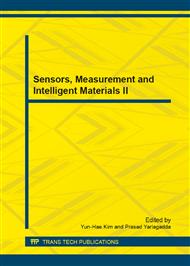p.1040
p.1046
p.1050
p.1055
p.1060
p.1067
p.1071
p.1075
p.1079
A Variable Step Size LMS Based on Sparsity for System Identification
Abstract:
In many practical applications, the impulse responses of the unknown system are sparse. However, the standard Least Mean Square (LMS) algorithm does not make full use of the sparsity, and the general sparse LMS algorithms increase steady-state error because of giving much large attraction to the small factor. In order to improve the performance of sparse system identification, we propose a new algorithm which introduces a variable step size method into the Reweighted Zero-Attracting LMS (RZALMS) algorithm. The improved algorithm, whose step size adjustment is controlled by the instantaneous error, is called Variable step size RZALMS (V-RZALMS). The variable step size leads to yielding smaller steady-state error on the premise of higher convergent speed. Moreover, the sparser the system is, the better the V-RZALMS performs. Three different experiments are implemented to validate the effectiveness of our new algorithm.
Info:
Periodical:
Pages:
1060-1066
Citation:
Online since:
December 2013
Authors:
Keywords:
Price:
Сopyright:
© 2014 Trans Tech Publications Ltd. All Rights Reserved
Share:
Citation:


